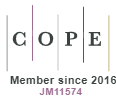How is assistive technology meeting the needs and goals of people with brain impairment? Building evidence to support practice
Libby Callaway A B C * and Jacki Liddle
A B C * and Jacki Liddle  D E F
D E F
A Rehabilitation, Ageing and Independent Living Research Centre, School of Primary and Allied Health Care, Faculty of Medicine, Nursing and Health Sciences,
B Occupational Therapy Department, School of Primary and Allied Health Care, Faculty of Medicine, Nursing and Health Sciences,
C
D School of Health and Rehabilitation Sciences,
E Occupational Therapy Department,
F Centre for Functioning and Health Research,
References
Australian Human Rights Commission (2021). Human rights and technology final report. Sydney: Author. Retrieved January 24, 2023, from https://tech.humanrights.gov.au/downloads
Australian Government Department of Health and Aged Care (2021). Trial of national provider of goods equipment and assistive technology under the Commonwealth Home Support Programme. Canberra: Author. Retrieved February 2, 2023, from https://www.health.gov.au/resources/publications/trial-of-national-provider-of-goods-equipment-and-assistive-technology-under-the-commonwealth-home-support-programme
Australian Government Department of Health and Aged Care (2023). Reforming in-home aged care. Canberra: Author. Retrieved March 18, 2023, from https://www.health.gov.au/topics/aged-care/aged-care-reforms-and-reviews/reforming-in-home-aged-care
Brandt, å., Jensen, M. P., Søberg, M. S., Andersen, S. D., Sund, T. (2020) Information and communication technology-based assistive technology to compensate for impaired cognition in everyday life: A systematic review. Disability and Rehabilitation: Assistive Technology 15(7), 810-824.
| Crossref | Google Scholar |
Jamieson, M., Cullen, B., McGee-Lennon, M., Brewster, S., Evans, J. J. (2014) The efficacy of cognitive prosthetic technology for people with memory impairments: A systematic review and meta-analysis. Neuropsychological Rehabilitation 24(3-4), 419-444.
| Crossref | Google Scholar |
Jamwal, R., Callaway, L., Ackerl, J., Farnworth, L., Winkler, D. (2017) Electronic assistive technology used by people with acquired brain injury in shared supported accommodation: Implications for occupational therapy. British Journal of Occupational Therapy 80(2), 89-98.
| Crossref | Google Scholar |
Kettlewell, J., das Nair, R., Radford, K. (2019) A systematic review of personal smart technologies used to improve outcomes in adults with acquired brain injuries. Clinical Rehabilitation 33(11), 1705-1712.
| Crossref | Google Scholar |
Layton, N., Bould, E., Buchanan, R., Bredin, J., Callaway, L. (2022) Inclusive research in health, rehabilitation and assistive technology: Beyond the binary of the ‘researcher’ and the ‘researched. Social Sciences 11(6), 233.
| Crossref | Google Scholar |
Layton, N., O'Connor, J., Fitzpatrick, A., Carey, S. (2022) Towards co-design in delivering assistive technology interventions: Reconsidering roles for consumers, allied health practitioners, and the support workforce. International Journal of Environmental Research and Public Health 19(21), 14408.
| Crossref | Google Scholar |
Liddle, J., Worthy, P., Frost, D., Taylor, E., Taylor, D., Beleno, R., The Florence Project Living Experience Expert Reference Group (2022) Personal and complex: The needs and experiences related to technology use for people living with dementia. Dementia 21(5), 1511-1531.
| Crossref | Google Scholar |
Nam, J. H., Kim, H. (2018) How assistive devices affect activities of daily living and cognitive functions of people with brain injury: A meta-analysis. Disability and Rehabilitation: Assistive Technology 13(3), 305-311.
| Crossref | Google Scholar |
National Disability Insurance Agency (2022). NDIS Quarterly report to disability ministers 31 December 2022: Q2 of Y10. Geelong: Author. Retrieved February 2, 2023, from https://www.ndis.gov.au/about-us/publications/quarterly-reports
Royal Commission into Aged Care Quality and Safety (2021). Final report. Canberra: Author. Retrieved February 2, 2022, from https://agedcare.royalcommission.gov.au/publications/final-report
International Organization for Standardization (2022). ISO 9999:2022 assistive products - Classification and terminology. Geneva: Author. Retrieved June 24, 2023, from https://www.iso.org/standard/72464.html
Smith, E. M. (2021) Assistive technology research: Evidence for a complex and growing field. Assistive Technology 33(4), 177.
| Crossref | Google Scholar |
Van der Roest, H. G., Wenborn, J., Pastink, C., Dröes, R.-M., Orrell, M. (2017) Assistive technology for memory support in dementia. The Cochrane Database of Systematic Reviews 6(6), CD009627.
| Google Scholar |
Waldron, D., Layton, N. (2008) Hard and soft technologies: Defining roles for clinicians. Australian Journal of Occupational Therapy 55(1), 61-64.
| Crossref | Google Scholar |
World Health Organization & UNICEF (2022). Global report on assistive technology. Geneva: Authors. Retrieved February 2, 2023, from https://www.who.int/publications-detail-redirect/9789240049451
World Health Organization (2018). Assistive technology. Geneva: Author. Retrieved February 2, 2023, from https://www.who.int/news-room/fact-sheets/detail/assistive-technology
World Health Organization (n.d.). Health products policy and standards: Assistive Technology. Geneva: Author. Retrieved February 2, 2023, from https://www.who.int/teams/health-product-policy-and-standards/assistive-and-medical-technology/assistive-technology


